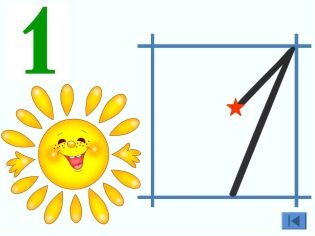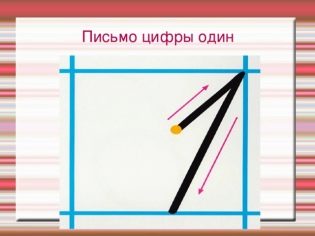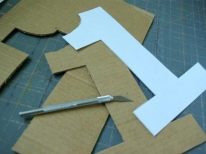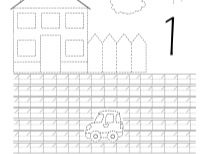Learning to write the number "1" with the child
The little ones have ended, and the child enters the middle group of the kindergarten, which means that the first attempts to study the letter begin. First, children are taught to write numbers. The very first and seemingly simple figure is “one”. However, its writing must be approached correctly.
How to write?
Before teaching a kid to write any number, it is necessary that he could count to 5 or 10, the kid must have an idea of the very concept of number. It is formed in a child to 4-5 years. At this time, you can proceed to the letter.
Write the number "1" and all other numbers are needed only in the form of a game. So the child will be fun and interesting to memorize new knowledge. To begin with, suggest circling the already finished number 1. Then we study together - take the child’s hand and draw the number “one”, pronouncing its name. It is important to write the numbers according to the rules, otherwise the accuracy and beauty of the letter will be more difficult to instill., because the child will already have his own simple skill of writing numbers.
Put the point at which writing begins. Next, go up, and draw the dash down. The figure is ready. The first time a large number is written to teach a child the sequence of writing and accuracy. Next, go to writing in the cell notebook.
To have a visual image, draw a large cell on the sheet and write the number correctly again, pronouncing a sequence of drawing elements. Hang the sample on the wall for the child to watch and repeat the spelling.
First, teach a child a simple printed “1”, then show how to spell uppercase.
Techniques
There are the following:
- Entertaining tablet. Download on the tablet, in addition to games, an application with numbers. Animation of the writing will allow the child to remember the sequence and repeat on the sheet independently if the adults are busy. The alternative is an animated picture with the writing of the number one.
- Draw in the air. Keep your hand in the air and have your child repeat you. Further, when studying it is possible to guess what is depicted in the air.
- Stencil. Create a stencil "1" and offer to circle it.
- Write everywhere - on a walk: along the sand, build a figure of pebbles or sticks, while cooking: on flour or grits, using toys.
- Figure of numbers. Suggest your child to draw a picture using only the number 1. Start small - patterns, snowflakes, Christmas trees. At the same time, we play the game “What does it look like?”, Creating any number of “one” digits and looking for meaning in them.
- “Relive” the figure. Make a digital hero by adding pens, legs, face. Play or come up with a fairy tale with the participation of this hero.
- Associations. Ask your baby what this number looks like: search among household items, toys or in a book. Good helpers will be calendars and clocks - a simple search for a number and its values will help you learn to understand time.
- Different materials. Use pens, pencils, felt-tip pens, crayons for writing, sculpt a figure from plasticine, cut out of paper. All this will allow the child to compare how the tsiferka turns out, how easier it is to write, and the hand will gradually get used to it, and the skill will reach automatism.
Tips
Parents should bear in mind the following:
- Do not start learning too early, otherwise the child will lose the desire to learn with his peers. If the child is willing, then you should not refuse.
- Teach the concept of "cell" and show how to navigate it. This is very helpful in learning and in explaining writing.
- Develop fine motor skills. There is a trembling hand diagnosis - when the elements are curved and the lines are waves.In this case, the child does little work on the small muscles of the arm. To strengthen motility and hand strength, play finger games, finger twister, cut, braid, touch small parts, sculpt, draw with fingers.
- Start simple. Draw on the points: sticks, lines with elements of the number "one". Further complicate the task. Tell that the number is “friendly” with others, and together they form new numbers - 10, 21, 11, 100.
- Be sure to praise the child to increase the desire to learn and strive for success.
To make the child easier to master the writing of the very first digit, use different techniques, alternating and combining them, then the training will become an exciting game, the child will quickly remember everything and will accurately display the numbers.
We also recommend that you show the child a developing cartoon on how to write the number 1.























